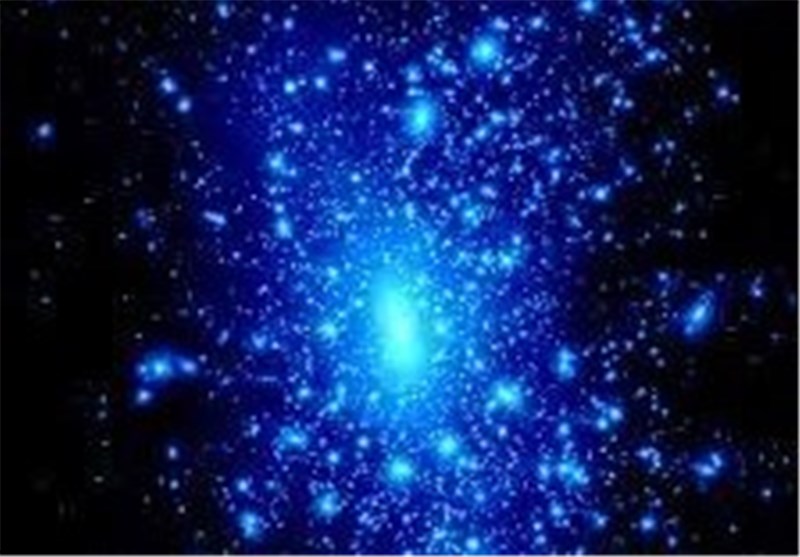Dark Matter Hunters’ Inconclusive Signal Grabs Headlines
TEHRAN (Tasnim) – An announcement Wednesday from physicists searching for particles of mysterious dark matter has set off a hype storm—even though the team says it hasn’t actually discovered anything yet.
Physicists working with the XENON collaboration reported Wednesday in an online symposium they have seen dozens of odd events that could be signs of new particles call axions coming from the Sun. Or evidence that common particles called neutrinos are more magnetic than expected. Or the result of contamination within the detector. Or just a statistical fluke.
“What we’re saying is that there’s something in our detector that nobody expected, and at this time nobody knows what it actually is,” says Rafael Lang, a physicist and XENON team member from Purdue University.
New particles or unexpected phenomena would thrill particle physicists, who haven’t discovered anything not predicted by their standard model for decades. But other experimenters are reacting with caution, as the history of dark matter searches is replete with stories of tantalizing hints that grabbed attention and then faded away with more data. Most of these errant signals were just like the new one from XENON: a clutch of unexplained events at an energy just above the threshold at which the detector starts to work. “The threshold region is the hardest to characterize,” says Juan Collar, a physicist and dark matter hunter at the University of Chicago. “We’ve all been burned by that a million times.”
Since 2006, the XENON team has built a series of ever-bigger detectors in Italy’s underground Gran Sasso National Laboratory that search for dark matter, the unidentified stuff thought to pervade every galaxy and provide the gravity needed to keep it from whirling apart. The scientists watch for hypothetical dark matter particles called weakly interacting massive particles (WIMPs) that might occasionally collide with atomic nuclei within a vat of frigid liquid xenon and produce telltale flashes of light—so far with no success.
But the detector can also distinguish less massive particles bouncing off the electrons in the xenon atoms. Using the third iteration of the detector—XENON1T, which contained 1 ton of liquid xenon and ran from late 2016 until last year—researchers saw 285 such electron recoils in a particular energy region when they expected just 232, Evan Shockley, a physicist at the University of Chicago reported in the symposium. The excess of 53 events is, in the units physicists prefer, 3.5 standard deviations above the expected background level, not enough to claim a discovery, but enough to raise eyebrows.
Whatever was crashing into the electrons, the particles were too light to be standard WIMPs. In fact, detailed analysis suggests they could be other hypothetical particles called axions, invented to solve problems in the theory of the strong nuclear force. To explain the signals from XENON1T, those axions would have to weigh a few kilo-electrons volts (keV)—at the heavy end of theoretical predictions. Axions that heavy could not, ironically, account for the dark matter, because there’s a theoretical trade-off between the mass of the axion and how many could linger from the big bang. But they could come from nuclear interactions in the Sun. Alternatively, the excess events could have been produced by well-known particles called neutrinos, which stream out of the Sun by the trillions, if they are more magnetic than standard theory predicts.
Then comes the train of caveats. Both the axion and the neutrino hypothesis would clash with certain astrophysical observations about the behavior of stars, Shockley noted. Moreover, all of the events cluster at an energy of 2.4 keV, just above the detector’s threshold. Making accurate counts at the threshold is notoriously difficult, says Richard Gaitskell, a physicist and dark matter hunter at Brown University. Just a 10% error in the modeling of the detector threshold could account for the signal, he says—although he adds that the XENON team appears to have done a good job of calibrating the detector.
Perhaps most important, the signal could come from a mundane source well-known to dark matter hunters: tritium contamination within the detector. Tritium, a radioactive isotope of hydrogen, decays by spitting out an electron, which could fake an event. And it’s generated within a detector itself, Collar explains, by neutrons dislodged from the surrounding rock by highly energetic cosmic rays. The neutrons can then break atomic nuclei within the xenon to produce tritium. Just three tritium atoms per kilogram of xenon would suffice to produce the signal, Shockley says. XENON researchers cannot rule out that tritium contamination at that level, although they think their filtering system keeps it much lower.
That fact alone pours cold water on the case for exotic particles, Gaitskell says. “It means that the other, more exotic scenarios don’t make it to the top of the list,” he says.
Clarity could come soon. XENON researchers are already commissioning a bigger version of their detector, XENONnT, which will contain several tons of liquid. And Gaitskell and others in the United States are working on an equally big liquid xenon detector. If those detectors see something, too, the case for exotic particles would get stronger. But if history is a guide, the intriguing signal is likely to fade.






